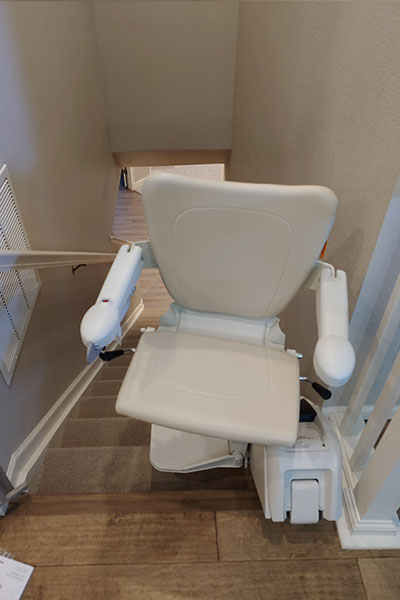When considering how to make a multi-level home more accessible, choosing between a vertical platform lift (VPL) and a home elevator can be challenging. Both options offer significant benefits, but the right choice depends on your specific needs, home layout, and budget. In this guide, we will help you understand the key differences between these two solutions and assist you in making the best decision for your situation.
Vertical Platform Lifts: A Practical Solution for Mobility Challenges
Vertical platform lifts, often referred to as wheelchair lifts, provide easy access to elevated areas like porches, decks, and even different floors within your home. These lifts are particularly helpful if you or a family member uses a wheelchair or has difficulty navigating stairs. With a VPL, you can simply roll or step onto the platform, and the lift will smoothly raise you to the desired height.
One of the main advantages of vertical platform lifts is their compact design. They take up much less space than a ramp, making them an ideal choice for homes where space is limited. For instance, if your front steps are steep or if your porch is elevated, a VPL can be a great alternative to a long and winding ramp.
Additionally, vertical platform lifts are versatile and can be installed both indoors and outdoors. This flexibility allows you to access all areas of your home, from your backyard deck to your second-floor bedroom, without any hassle. The lifts are also equipped with essential safety features like automatic folding ramps, safety sensors, and emergency stop buttons, ensuring a safe and smooth ride every time.
Independent Living Solutions offers high-quality vertical platform lifts that cater to various needs. Their products blend seamlessly into your home while providing reliable accessibility. If you’re considering a cost-effective solution, used wheelchair lifts for stairs may also be available through their popular recycled equipment program, making it easier to find a lift that fits your budget.
Elevators: A Stylish and Convenient Option for Multi-Level Homes
Home elevators are another excellent solution for enhancing accessibility, especially if you have multiple floors in your home. Elevators provide a level of convenience and luxury that is unmatched by other mobility solutions. They allow you to move effortlessly between floors without the need to navigate stairs.
There are two primary types of residential elevators: those that require a hoistway and those that do not.
Elevators with a Hoistway are typically installed in a dedicated shaft or hoistway, which often resembles a closet when the elevator doors are closed. These elevators are designed to blend into your home’s architecture, providing a sleek and discreet solution. However, installing a hoistway elevator can be more complex and may need significant modifications to your home. You’ll need to ensure that there is enough space, usually about 5 x 5 feet and that the structure can support the weight of the elevator and its occupants.
On the other hand, Elevators Without a Hoistway are a more cost-effective option. These elevators don’t require a shaft and can often be installed more quickly and easily. They do, however, need a load-bearing wall to support the elevator’s weight. While these elevators are not as concealed as those with a hoistway, they still provide a stylish and functional way to move between floors. This option is ideal for homes where space is limited or for those looking to add an elevator without major construction work.
For those interested in this type of solution, Independent Living Solutions offers various residential elevators for sale. Their team can help you choose an elevator that not only meets your needs but fits seamlessly into your home.
Choosing the Right Solution for Your Home
When deciding between a residential elevator and a wheelchair lift for stairs, there are several factors to consider:
- Space- VPLs require less space than elevators, making them a better choice for homes with limited room. Elevators, however, offer a more permanent and aesthetically pleasing solution.
- Budget- VPLs are generally more affordable, both in terms of the initial cost and installation. Elevators, especially those with a hoistway, tend to be a bit expensive but offer a higher level of convenience.
- Aesthetics- If maintaining the visual appeal of your home is important, a hoistway elevator might be the better choice. However, VPLs can be installed in less visible areas, like the side of a porch or in a garage.
- Mobility Needs- Consider the specific mobility challenges you or your family members face. If wheelchair accessibility is a priority, a VPL may be the most practical option. If you’re looking for an all-around solution for multi-level access, an elevator could be the better fit.
Ultimately, both vertical platform lifts and home elevators can significantly improve the accessibility of your home. By carefully weighing both the pros and cons of each option, you can pick the solution that best meets your needs and also enhances your quality of life.


Recent Comments